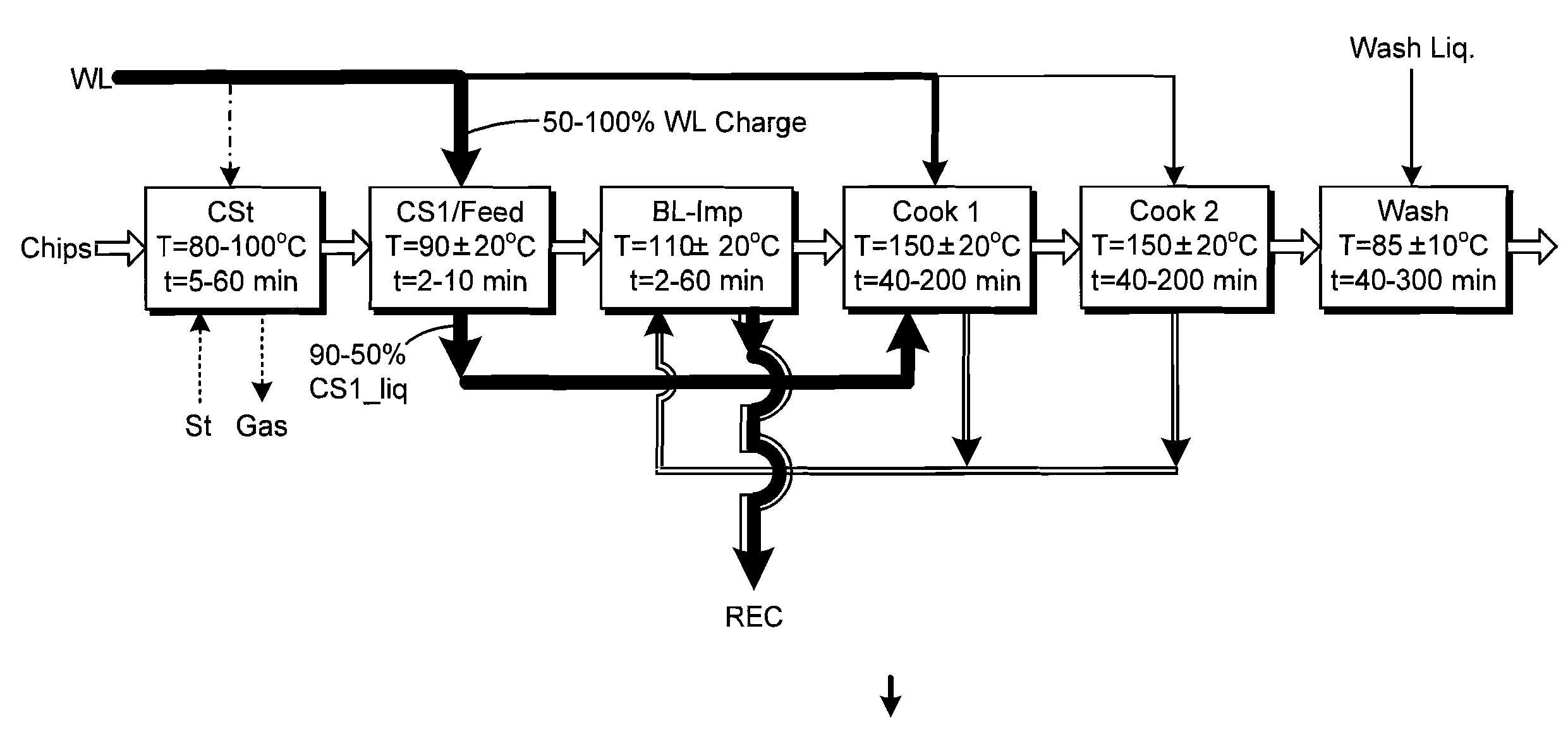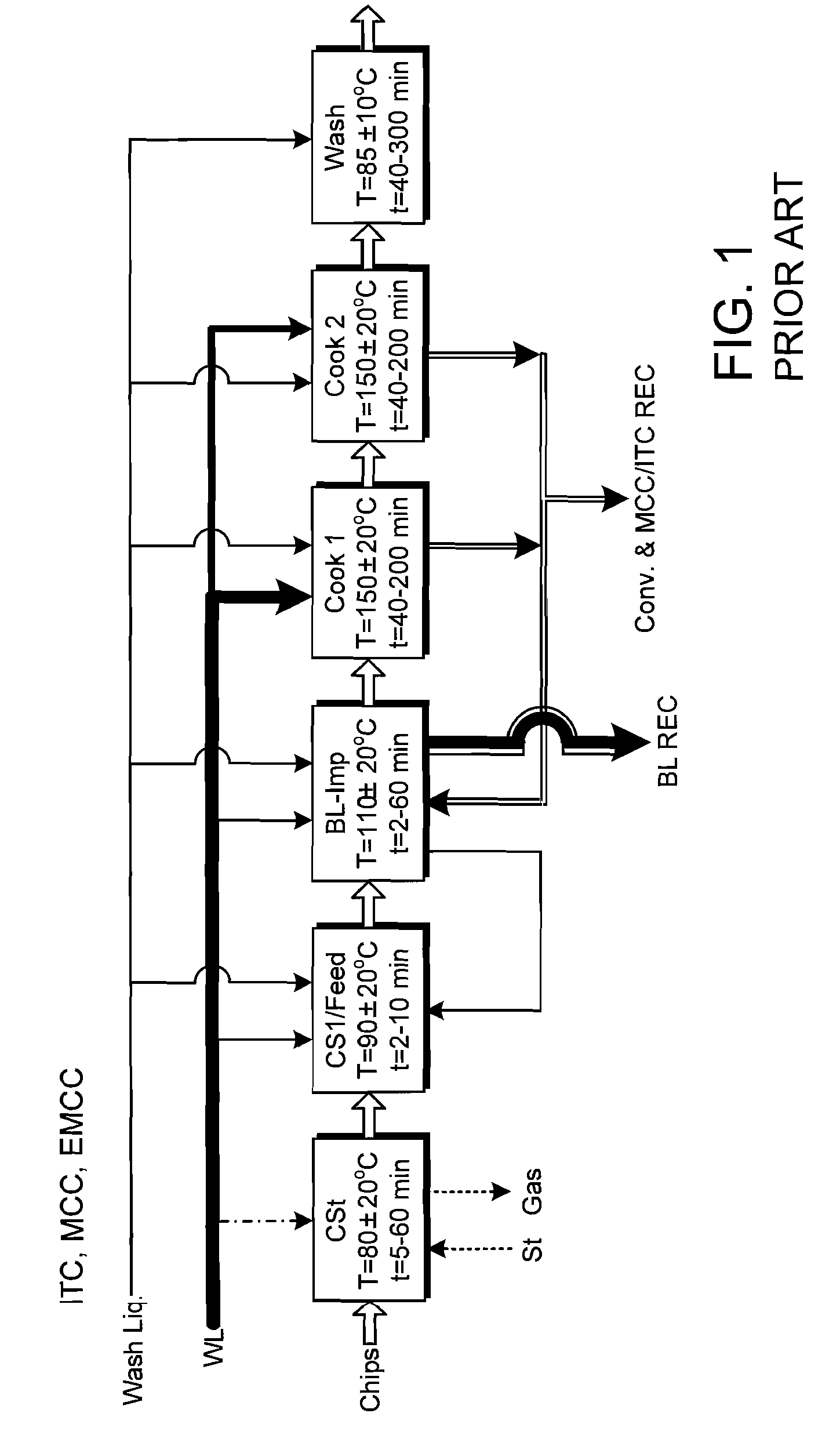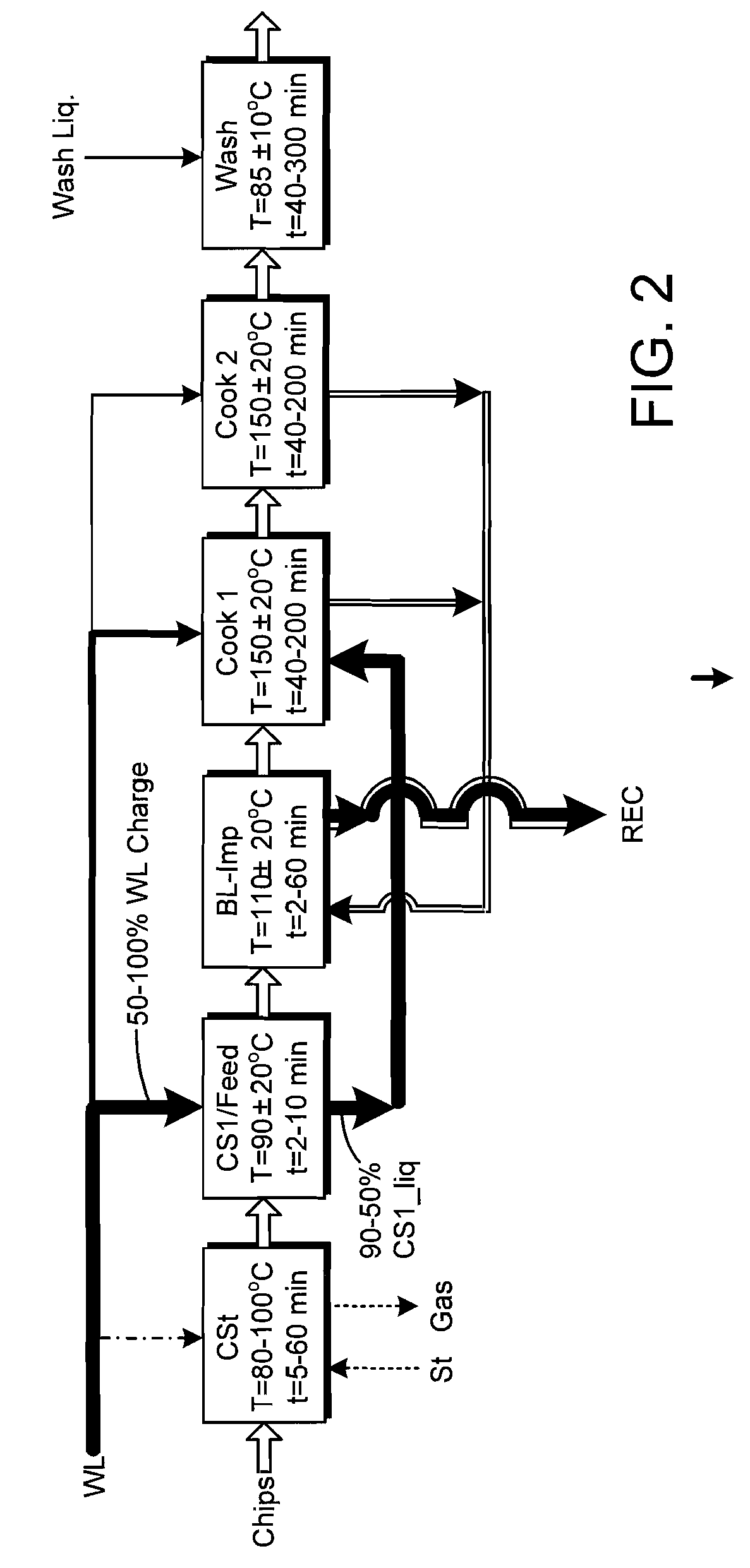Pretreatment of chips with white liquor prior to a treatment with black liquor
a technology of black liquor and white liquor, applied in the field of pretreatment of chips with white liquor prior to a treatment with black liquor, can solve the problems of large amount degrading and reducing yield
- Summary
- Abstract
- Description
- Claims
- Application Information
AI Technical Summary
Benefits of technology
Problems solved by technology
Method used
Image
Examples
Embodiment Construction
[0025]FIG. 1 shows an overview of how cellulose pulp has been conventionally manufactured with various basic cooking processes. The starting material, often chipped wood, is fed into a chip hopper in which heating of the chips by steam takes place (CSt / Chip Steaming). This often occurs in several stages with steam (St / Steam) of successively increasing heat value (temperature) being used. The starting material is heated to the interval 80±20° C., during a period of at least 5-60 minutes. Normally, toxic waste gases (Gas) are formed, which must be handled and destroyed in a waste gas system. After being heated by steam, the cellulose material is mixed or forms a sludge as a fluid / wood mixture through the addition of fluid. The fluid that is added is obtained from a subsequent treatment in the cooking stage, and is known as black liquor (BL / Black Liquor), and often with the addition of white liquor / alkali (WL / White Liquor). This fluid / wood mixture is introduced into a transfer circulat...
PUM
| Property | Measurement | Unit |
|---|---|---|
| temperature | aaaaa | aaaaa |
| temperature | aaaaa | aaaaa |
| temperature | aaaaa | aaaaa |
Abstract
Description
Claims
Application Information
 Login to View More
Login to View More - R&D
- Intellectual Property
- Life Sciences
- Materials
- Tech Scout
- Unparalleled Data Quality
- Higher Quality Content
- 60% Fewer Hallucinations
Browse by: Latest US Patents, China's latest patents, Technical Efficacy Thesaurus, Application Domain, Technology Topic, Popular Technical Reports.
© 2025 PatSnap. All rights reserved.Legal|Privacy policy|Modern Slavery Act Transparency Statement|Sitemap|About US| Contact US: help@patsnap.com



